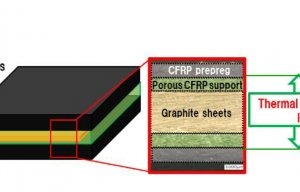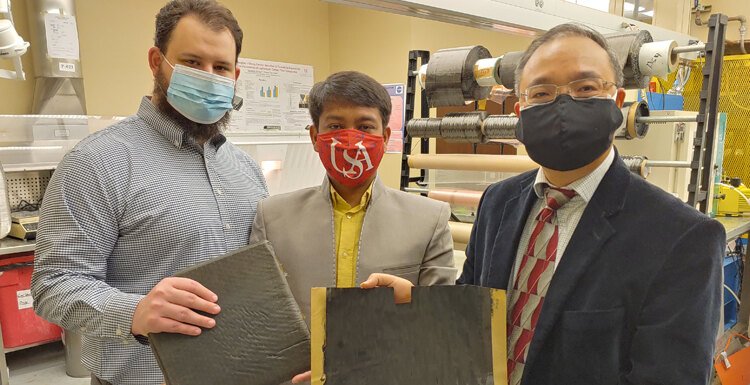
Improved heat dissipation for carbon fibre composites
Hexcel, MHP Americas, Porsche Motorsports Toray and UST Mamiya are partnering with the university on ZT-CFRP commercialisation.

23rd March 2021
Innovation in Textiles
|
Alabama, USA
The University of South Alabama has received a $250,000 National Science Foundation Partners for Innovation grant to make new high-performance carbon fibre reinforced polymer (CFRP) composites available for broad commercialisation.
Conventional CFRP composites, usually in laminate form, provide an excellent weight-to-strength ratio but mechanical, electrical and thermal weakness limits their potential compared with metals in many applications.
The new technology has demonstrated notable improvements in those properties, allowing for far better multifunctional performance that can be better tailored to the applications.
The key is the strong and highly conductive carbon nanofibres (CNFs) threaded through multiple arrays of carbon fibres in a zig-zag pattern along what is known as the z-direction or thickness direction of a composite laminate panel, creating an interlocked multiscale fibre-reinforced network.
This patented technology is known as ZT-CFRP and was developed by University of South Alabama mechanical engineering Professor Kuang-Ting Hsiao.
“If you apply this concept, we can expect that aplanes, cars, or sporting goods utilizing ZT-CFRP will be more efficient, lower cost, simpler to design and assemble, lighter and stronger,” he said. “The saved weight could be used for adding more performance or upgrading entertainment options.”
The company is partnering with five major corporations for commercialisation – Hexcel, MHP Americas, Porsche Motorsports Toray and UST Mamiya.
The National Science Foundation has long supported academic research, but its Partners for Innovation programme focuses on identifying and supporting research and technologies that have potential for accelerated commercialisation.
“The success of this technology and its commercialisation will potentially benefit all participating companies and the broader user base of composite materials,” Hsiao said. “If the technology demonstrates readiness for commercialisation, the creation of a start-up, licensing, joint-venture, and other business arrangements in various markets all are possible next steps.”

Business intelligence for the fibre, textiles and apparel industries: technologies, innovations, markets, investments, trade policy, sourcing, strategy...
Find out more